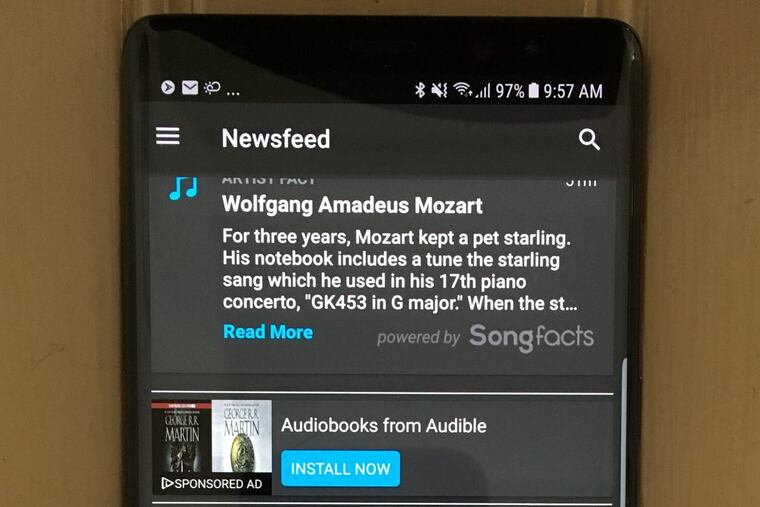Why Apple should do more to help phone users in emergencies
Protecting the public instead of profits - what a novel idea.

With catastrophes coming right and left — some acts of Mother Nature (and Father Global Warming), others triggered by gunmen and dictators — we have to ask hard questions. Are tech giants obligated to give their products upgrades that enhance the well-being of users in an emergency? Why does it take a calamity to get the big players and government watchdogs to act?
Tesla underscored the theme last month when the carmaker temporarily increased — by wireless-radio connection — the battery capacity and driving range of some Florida-hurricane-escaping electric rides with a free software upgrade that used to cost $6,000.
The National Association of Broadcasters and Federal Communications Commission chairman Ajit Pai have been pushing that point again in recent weeks, seeking to shame Apple into supporting the FM radio tuner circuitry that has long been onboard but never activated on almost 100 million iPhones.
Last weekend, the FCC granted a temporary operating license for Project Loon, developed by Google's parent Alphabet, to provide emergency cellular service in Puerto Rico by using high-flying balloons. The agency offered approval within hours after Google applied for its license, though developers have been testing Loon globally since 2011 and over Puerto Rico for a year.
Even three weeks after Hurricane Maria ravaged the island, 70 percent of Puerto Rico's cell towers remain down, and 85 percent of electric customers are without power. Service outages also linger in the U.S. Virgin Islands and in fire-ravaged California wine country, and after storms hit Florida and Texas.
Keeping a portable radio and batteries nearby remains the best strategy for staying in contact during a power breakdown. And if your radio generates power with a hand-crank, so much the better.
But being able to hear emergency news on your smartphone can also be crucial. Escapees from the Las Vegas massacre reportedly burrowed in hotel rooms for hours, not knowing that the lone shooter was dead. NAB has pushed for a pocket lifeline since the 2012 introduction of the NextRadio project.
Presented as a "best of both worlds" for radio on a phone, NextRadio merges FM reception with visual enhancements, from artist info to advertising. The onboard tuner consumes just one-third the power of a normal phone streaming radio and uses zero data minutes. In a test this week on a charged Samsung Galaxy Note 8, NextRadio delivered for 28 hours before the battery crashed.
Chipmaker Qualcomm was the first hardware supplier to support the NextRadio cause, building an FM tuner into its smartphone modems. Then carriers (Sprint first) started rallying round in late 2013. Today, NextRadio is available as an app on phones from AT&T, Boost Mobile, Cricket, MetroPCS, T-Mobile, Verizon, and Xfinity Mobile. Its dual-mode FM and FM-HD tuner can work on many 2015-and-later Android phones from Alcatel, BLU, HTC, Huawei, Kyocera, LG, Moto, Samsung, Sharp, and ZTE.
The big holdout is Apple, which critics say dithers so it can boost its $9.99 Apple Music service. "The last thing they would want is to create competition in a space where they think they can own it," says NextRadio president Paul Brenner.
In defense, the company cited its safety features: "Users can dial emergency service and access Medical ID card information directly from the Lock Screen, and we enable government emergency notifications, ranging from Weather Advisories to Amber Alerts. iPhone 7 and iPhone 8 modules do not have FM radio chips in them, nor do they have antennas designed to support FM signals, so it is not possible to enable FM reception in these products."
But if nearby cell towers go "poof," so would Apple's alerts. Wide-coverage radio stations have a better chance of hanging on. Apple possesses the expertise to add FM reception to its phones, noted NAB chief technology officer Sam Matheny.
"Generations 5 to 7 of the iPod Nano [just discontinued] have a very elegantly designed FM radio that even offers music pause, buffering, rewind, and fast-forward features," Matheny said. "The Apple engineers used the insulation in the wired earphone cable as the antenna, just as other smartphonemakers do. While Apple can't go back and activate the chips in past phones, they could make a modification to the design of the new iPhone 8 and 8 Plus. An independent 'tear-down' report from TechInsights found that the same Broadcom multifunction radio chip that does WiFi and Bluetooth on Apple phones also delivers FM on competitors' phones."
How about the 8's lack of a headphone jack for antenna feeding, also an issue in Google's new Pixel 2 phones? Wiring an antenna "pin" to current iPhones' Lightning connector could be done by "technically sophisticated" Apple, says Matheny. "This is a choice they're making."
Stuff to keep in mind when shopping for a communicator.